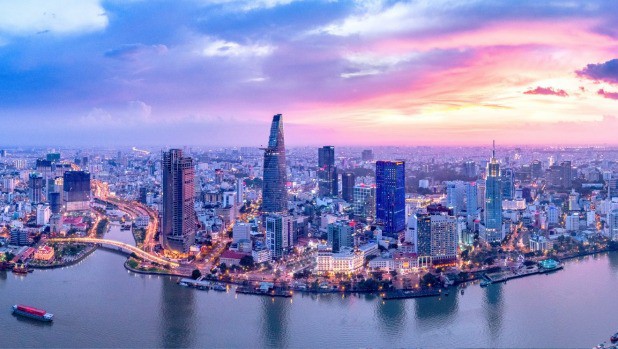EXPERTISE | Events | Venue | Life at Constellar
Constellar convenes businesses, curates ideas and creates opportunities for sustainable business growth.
EXPERTISE | Events | Venue | Life at Constellar
Constellar convenes businesses, curates ideas and creates opportunities for sustainable business growth.


The COVID-19 pandemic ravaged most construction sectors across the world regardless of geography. Singapore itself suffered a 27.4% year-on-year contraction in the sector as a consequence of substantial economic activity screeching to a halt and the imposition of COVID-19 safety measures and restrictions. The ensuing labour crunch and impact on capacity has continued to affect the local construction industry.
But just as signs of recovery make themselves apparent across built environment sectors in Singapore and beyond, some countries are performing far better than others. Vietnam is one such example. Leading the pack of all Asia-Pacific construction sectors in 2020 is, not so surprisingly, Vietnam, which posted 6.8% growth in 2020 even as virtually all other construction sectors globally contracted. And this strong performance was after accounting for COVID-induced deceleration, since before the pandemic, Vietnamese construction was already growing at an average annual rate of 9.6% between 2015 and 2019. So how does one handle the handicap-defying hankering for handrails in Hanoi?
The largest influencing factor is the ongoing diversification of MNC’s supply chains away from China as more and more corporations account for the disruptions to their bottom line caused by the pandemic, the trade war between the US and China, and the Chinese government’s trade policies. With US-China relations expected to remain sour moving forward, MNCs have been making a concerted effort to move their manufacturing to other APAC economies–with Vietnam and India being big winners. Recent Vietnamese reforms to foreign investment rules have allowed an influx of forign direct investment into the construction sector, with foreign developers vying for Public Private Partnerships to help the growing Vietnamese economy keep pace with the demand for industrial infrastructure to service MNC manufacturing needs.
Vietnam’s growing middle class is also becoming rapidly urbanised, pushing up the demand for built environment solutions–especially in the residential sector and in affordable housing. Vietnam’s urbanisation rate–the proportion of the population living in cities–was 36.6% in 2019 and is expected to reach 51.2% by 2040, precipitating a potential housing shortage. So the Vietnamese government has set aside $1.4 billion as incentives for developers to focus on such affordable housing projects between 2018 and 2022. For these reasons, Fitch Solutions, a subsidiary of global ratings agency Fitch, has projected the Vietnamese construction sector to grow at an average rate of 7.2% year-on-year between 2021 and 2029. As the tailwinds of global recovery in construction strengthen, Vietnam may be poised to run rings around its peers on the back of strong and sustained growth supported by demographic and geopolitical fortunes.